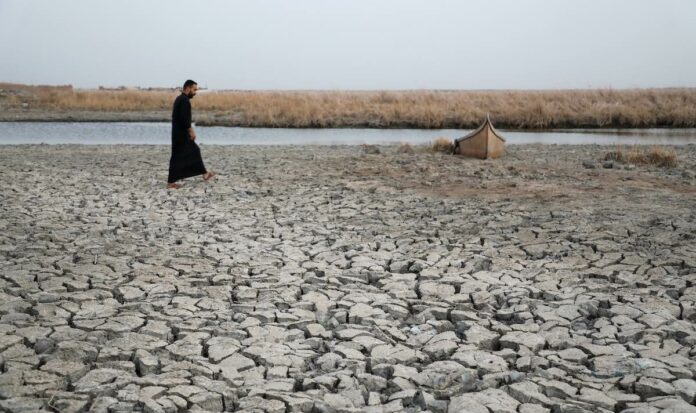Ahmed Khudair Hussein – Department of Social Studies, Al Bayan Center for Studies and Planning.
Background:
Research and studies indicate the magnitude of the social risks associated with the climate changes in Iraq today some stemming from the human activities of subtracting enormous amounts of gases from various manufacturing activities, fossil fuel fuels, oil and gas, high population growth rates, and dredging of orchards and green areas and some are associated with being part of the natural factors of greenhouse gases around the Earth, trapping the Sun’s heat; This leads to global warming and climate change, and these human activities and natural factors form a correlated and reciprocal relationship that affects each other.
Iraq has been affected in recent years by climate change, particularly with high temperatures, severe droughts in the southern regions, intensified dust, sandstorms, and internal migration, indicating an increase in the risks associated with climate change of natural emissions such as volcanoes, global warming, changing tendencies, human emissions of fossil fuels, bulldozing of green spaces and forests, and This study will discuss the risks associated with climate change on the ground and the cost to social realities, as well as the policies of the Iraqi Government in responding to the effects of climate change.
Emissions affecting climate change:
Climate change means the occurrence of climate change or the disruption of normal climatic conditions such as heat, rain, and wind for long or temporary periods caused by natural internal processes, external effects, or persistent anthropogenic changes in the composition of the atmosphere. In this sense, we are trying to detect natural and human emissions affecting climate change as follows:
I. Natural emissions
Although natural emissions are less frequent than human emissions, they are no less dangerous than natural emissions, such as volcanoes occurring in unstable regions of the globe, Change and central variation in Earth’s orbit, and rising levels of sunspots affect the climate, Lava eruption is observed to have a range of hundreds of kilometers. which indicates rising dust, dust, and ash to high altitudes beyond (35 km), leading to an overall reduction in solar radiation (temperature reduction) Up to (12%) or more of that depending on the strength and length of the eruption. The impact of the volcano continues even after it has been inactive for up to a period. 1-2 years, volcanic ash rises to high altitudes exceeding (32) km, as well as cooler climate and higher humidity, and is associated with volcanic activities. (1.5 m) the year after the volcano, such as the Chichon volcano in Mexico in 1982, which was thrown around 12 million tons of sulphur in the air, and the Natupuh volcano in the Philippines in 1991, which was dumped into the atmosphere around (25) 1 million tonnes of sulphur and for gases dumped by volcanoes (sulphur dioxide, CO2) Impact on atmospheric components and on the presence of some weather problems such as acid rain and some gases such as nitrogen oxides (NOx) is responsible for the erosion of stratospheric ozone gas, and the amount of heat released from volcanic explosions increases the temperature of the surrounding atmosphere, There is a correlation between volcanic eruptions, low temperature and increased humidity since the years in which temperatures have fallen in past centuries have been caused by increased volcanic activity and, conversely, by periods of warmth when there was no volcanic eruption, Volcanic soil reduces the brightness of the sun as it is a catalyst for cloud formation and dust minutes help to form ice crystals in the air, which drops below freezing and saturated with water vapor.
TOPICS Economics and development Climate change in Iraq: associated risks and the nature of the response
Climate change in Iraq: associated risks and the nature of the response
READ IN: عربي










